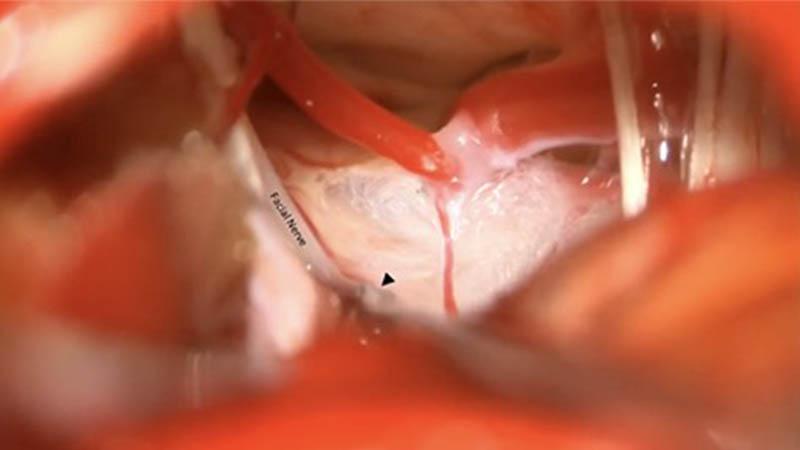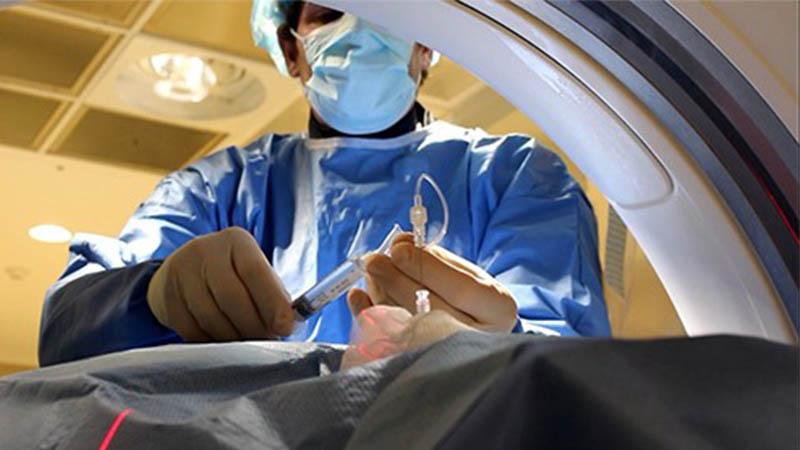The 2022 Innovations in Review of clinical and scientific advances in neurology and neurosurgery highlight the life-changing and life-saving medical and surgical interventions provided at NewYork-Presbyterian.
Clinicians and scientists from Columbia and Weill Cornell Medicine continue to pursue greater understanding of the complex nature of disorders of the brain and spine and pioneer more targeted approaches and therapies that ease the burden of illness and cure debilitating conditions.
Augmented Reality: A Navigational Technology Finds its Niche in Spine Surgery
Facial Nerve Massage as Rescue Treatment for Hemifacial Spasm
Advancing Gene Therapies for Neurodegenerative Diseases
Mitochondrial Diseases: Making Groundbreaking Progress in Uncommon Conditions

Augmented Reality: A Navigational Technology Finds its Niche in Spine Surgery
NewYork-Presbyterian doctors are turning to augmented reality (AR) – a new software-based enhancement that projects computer-generated images in real time onto the user’s field of view – to streamline image-guided spinal surgery. Neurological surgery faculty at NewYork-Presbyterian/Weill Cornell Medicine completed two studies, both published in Neurospine, that confirmed the feasibility and utility of incorporating AR into spine surgery. In the first study, the researchers found AR to be well-suited for use in minimally invasive transforaminal lumbar interbody fusion to delineate sequential surgical landmarks. In the second, they found that the use of AR in detecting spinal tumors is “a safe and effective alternative or adjunct to existing intraoperative orientation methods…particularly for minimally invasive approaches.”

Facial Nerve Massage as Rescue Treatment for Hemifacial Spasm
Neurosurgery faculty at NewYork-Presbyterian/Columbia are investigating an adjunctive treatment for those with hemifacial spasm who have undergone microvascular decompression (MVD) but still experience post-surgical issues. The researchers investigated the outcomes of facial nerve massage in patients who had previously undergone MVD but continued to have signs and symptoms of hemifacial spasms. Those patients were offered facial nerve massage as a rescue treatment. In their findings published in Neurosurgery, they reported that the majority of patients achieved durable and at least partial relief of spasms following facial nerve massage.

Advancing Gene Therapies for Neurodegenerative Diseases
NewYork-Presbyterian/Weill Cornell Medicine is leading the way in the application of gene therapies for neurodegenerative diseases. A team of doctors were among the first to apply gene therapy to disease of the brain and nervous system and are currently collaborating on a clinical trial for Alzheimer’s disease to use this therapy to correct the Apolipoprotein E (APOE) gene, one of the genetic causes of this disease. In another trial, they are taking a similar approach to correct a genetic form of Parkinson’s disease.

Mitochondrial Diseases: Making Groundbreaking Progress in Uncommon Conditions
Mitochondrial diseases are uncommon, but neuromuscular medicine specialists at NewYork-Presbyterian/Columbia have conducted pioneering work to understand this rare group of disorders characterized by defects in mitochondrial function. Columbia clinicians are exploring a very novel mitochondrial replacement technique to prevent the transmission of certain mitochondrial DNA mutations to future generations as well as developing specific, targeted, and precise therapies for rare conditions including spinal muscular atrophy, adult polyglucosan body disease, and thymidine kinase 2 deficiency.



